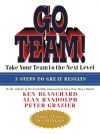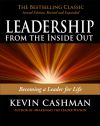Правообладателям!
Представленный фрагмент книги размещен по согласованию с распространителем легального контента ООО "ЛитРес" (не более 20% исходного текста). Если вы считаете, что размещение материала нарушает ваши или чьи-либо права, то сообщите нам об этом.Читателям!
Оплатили, но не знаете что делать дальше?
Текст бизнес-книги "The org board. How to develop a company structure"
Автор книги: Александр Высоцкий
Раздел: Управление и подбор персонала, Бизнес-книги
Возрастные ограничения: +12
Текущая страница: 2 (всего у книги 3 страниц)
Chapter 3
The product of a company
A professional in a specialized field, such as a chef or painter, can easily tell you their VFP. They would even be surprised you asked them about it. While with executives, you will often find that instead of their product, they list the actions they perform. Department heads will confidently tell you that their products are, «well-organized work», «high performance» or even "ensuring employees are provided with everything they need to do their jobs”. But that is not it! The VFP of an executive is what his entire department produces.
Take a crew of house painters as an example. A foreman will plan, assign tasks, ensure that the work gets done, coordinate the actions of the team with other departments, and perform many other functions. This activity is the "doingness". The VFP of a worker in his crew is obvious: painted walls. He has several workers who produce this VFP and he, as manager, is running the activity. His own VFP is the VFP of all the workers as a whole, i.e. the VFP of the whole crew. Once this is understood, it is not difficult to formulate his VFP as, "professional quality painting jobs completed on time". The foreman’s customers are expecting this product and willingly pay specifically for that. If a foreman can't get that VFP through executive actions, such as orders or assigning tasks, he simply picks up a brush and begins to paint the walls himself. He could at least achieve the crew’s VFP in that fashion.
In a similar vein, if the head of a company cannot get the company’s VFP produced through executive means, he rolls up the sleeves and finds customers, makes sales, creates advertisements, handles unhappy customers, etc. He does all this because he is responsible for the VFP of the company as a whole. Executives, as a rule, are responsible people, and, quite often, experts in the area they manage. Unfortunately, their expertise thwarts their ability to be good executives, and instead of learning and using management tools, they do the work of their juniors. It may seem very responsible to take the initiative and show an employee how to do the work. But in that moment when the executive demonstrates his wall-painting mastery, nobody is doing the job of the executive… Usually, an executive can replace his juniors, but not vice versa.
Imagine the foreman of a crew of a couple dozen painters, and, instead of ensuring productive and well-coordinated work, he personally takes a brush to the wall. Good control of workers can significantly increase the crew’s performance, compared to simply being an extra pair of hands. A competent sales manager with five salespeople in his department can significantly increase the sales volume if he plans the work out, sets targets, supervises the work, corrects errors, and demands results rather than personally closing the sales.
If you understand this principle, you can even determine whether the person you want to hire would make a good executive. Just ask him what he thinks his VFP as an executive is, and find out how well he understands the tools he should use as an executive to produce that product.
If you are the owner or the CEO of a company, your product is the VFP of your entire company. And that helps assess your own performance. For example, my main VFP as the founder of Visotsky Consulting is management tools implemented in our clients’ enterprises. If my company implements them correctly, it leads to the expansion of their businesses, which means that I produce my product. If my company takes on a project and does not accomplish that result, I have not produced the VFP.
Determining the VFP of your business is quite simple. It's the specific product or service for which your customers pay you money. If the business deals with window manufacturing and installation, the CEO’s VFP can be stated as, "windows of high-quality manufactured and installed". Of course, you need to clearly understand what the client is paying you money for. As an example, what do customers pay money for at a restaurant? Delicious food, atmosphere, speedy service, and a convenient location. Look at several restaurants, and you will find that they have completely different VFPs. There are restaurants that boast famous dishes where clients will travel great distances and reserve a table months prior just to eat there. There are restaurants known for their special ambiance, and restaurants where you expect to eat quickly.
Even in a relatively successful business, sometimes the executive does not understand the VFP of the company, and, therefore, his own VFP. Two years ago, I visited a restaurant that served Russian cuisine about 6 miles outside a small Russian town. The restaurant was unique because they grew their own delicious vegetables and herbs, and the interior of the restaurant consisted of separate rooms that emulated the rooms of an ordinary residential house from the Soviet period. No two rooms looked the same and each guest was greeted by the waiter who acted as the owner of the house. Having dinner there was more like visiting the house of your hospitable friends rather than a restaurant. Even though I’d eaten in many Russian restaurants, I'd never tasted such delicious Russian cuisine. That restaurant became extremely popular and well known in the city, and generated a decent income for its owner. After several years of business success, the owner decided to expand the business and opened a restaurant in a resort town by the sea. She invested all her savings in this new restaurant that was completely different from the original. It had neither its own vegetable garden nor the unique rooms. She transferred the chef and the best waiters to the new restaurant, and within a year she experienced nothing but losses. Moreover, the lack of attention to running the first restaurant, loss of qualified staff, and cutting operating expenses resulted in a significant decline of the business.
I don't know what her motivation was – maybe her dream was to retire by the sea. But from a business perspective, it wasn’t a smart decision. The reason for her failure is simple – she had never considered what the VFP of her old successful restaurant was, and what the new VFP should have been. People came to the old restaurant for a special meal and the ambiance. Visiting this restaurant was an event in itself, and customers willingly traveled several miles for the experience. The new restaurant was nothing like that. It only had the good recipes from the original restaurant, but without the supply of special fresh produce and the unique setting. This new restaurant, which was actually one of many located in the neighborhood, had a completely different VFP. Lack of understanding of the exact product the client is paying for resulted in her almost losing the business.
Retail companies have their own VFP, and it is not the merchandise they sell. By definition, the VFP is what a person produces, and retail companies do not produce the merchandise itself. Retailers "produce" the availability of a product to the customer. Trading and retail activities always entail providing a certain selection of goods at a particular location, plus some additional services. That is why in retail it is so important to assess the selection of goods provided in relation to the location. Duane Reade[5]5
Duane Reade: a chain of pharmacies and convenience stores primarily located in densely populated New York City areas, known for its wide range of merchandise.
[Закрыть] stores offer their customers a limited range of everyday products conveniently located so that they could drop in during their commute. Macy’s[6]6
Macy's: one of the largest and oldest chains of department stores in the United States. It has more than 800 department stores in the mid-range price category that specialize in selling clothing and footwear, as well as furniture, household goods, bedding, jewelry and cosmetics.
[Закрыть] department stores offer their customers a wide selection of inexpensive clothing and household goods. You do not stop there on your way home. You go there to buy a summer dress and end up leaving tired, with stuffed shopping bags that barely fit in the back seat of your car. Both of these are in the retail business but they have very different VFPs. And what’s interesting, is that in both examples the function of selling the merchandise is practically nonexistent, as they are self-service stores. It would be erroneous to state that the VFP of these stores were “sold goods” when they don’t take effort to sell, i.e. to exchange goods for money. By selling, I mean conscious actions of a salesperson that lead to a customer making a single purchase or purchasing more items. Yet, these stores consistently and successfully create a selection of goods wanted by their customers and correctly present them so their customer can easily find the right product by himself. They ensure that the store’s location is convenient, and that the product’s price and quality meet clients’ expectations.
If you haven’t been to the Apple Store on 5th Avenue in New York, you should stop by and you’ll see that nobody sells anything there either. The store’s staff offer advice, demonstrate products, answer customers’ questions, do the checkout, and hand over purchases to the buyer. However, they do not persuade the customer to buy the product or handle their objections. Apple has created such a compelling product, that during the Christmas season, customers have to squeeze through the crowded store to stand in a humongous line for the treasured box with a new iPhone or iPad. This store is a hybrid of a showroom and a warehouse. The difference from a showroom lies the large number of consultants and being able to pay for merchandise right on the sales floor.
Another example of a special VFP in a retail company, similar to the Apple store, is B amp;H Superstore of digital equipment in Manhattan. They have solved the problem of selling a large variety of sophisticated digital equipment in a relatively small space. The way the shop is set up, a client can get familiar with the equipment, get expert advice from the employees, as well as quickly pay and get the products they want. To display an array of equipment without overloading the area with stored goods, B amp;H installed a conveyor belt right below the ceiling of the sales area. It quickly delivers the desired items from the warehouse into the customer’s hands. It’s surprising that B amp;H has not yet become a well-known franchise. The volume of the VFP of these stores is something to truly admire. What is the VFP of such a store? Not of the company as a whole, but of a store, specifically? The VFP will definitely include wording such as, “assistance with making a choice", "speed", and "a certain selection of goods".
It does not matter whether one is managing just a single division or an entire company, if they don’t understand the group’s VFP, sooner or later, they will fail. In about 50 % of my consulting projects, I found that even the founder of the company did not have a clear understanding of the product the client was paying him for. If you’re an expert skier, are knowledgeable in the subject, and have been selling ski gear for more than 10 years, then your understanding of what is valuable may differ significantly from the viewpoint of the majority of customers in your store. This is because most of your buyers are beginners who are just taking their first steps. Beginners are the ones who tend to buy most of the equipment and gear, not those who have been skiing for years. Experienced skiers already have their “tried and true” gear that they keep throughout the seasons.
Finding out what holds value for your customers is simple through the use of surveys. A customer survey asks them what is valuable, important and what is missing for them in your product. This survey is not for promotion purposes, but its results are necessary to understand the client’s point of view. When conducting the survey, ask about the product’s shortcomings, because shortcomings and values are two sides of the same coin. If the responses say that they do not like slow service, that means that fast service is valuable. If they say that pricing isn’t clear and that annoys them, then a simple pricing system would be valuable. Think of The Dollar Store or The Dollar Tree – they can be found in any city because their VFP is in demand and have their own clientele.
It is not always easy to objectively look at the results of these surveys. It took me a couple of years to agree with the survey results from our own clients. When I took my first steps in consulting as a business lecturer and owner of a training company, we were conducting great seminars where we taught management tools to business owners and managers. The seminars were attended by thousands of people every year. We had great reviews where they talked about how they wanted to change something in the way their business was organized or how much they liked the ideas we taught them.
But when I analyzed statistical data, it turned out that the average client attended two to four seminars and then stopped attending. Some customers had even booked one or more corporate seminars, but after some time they stopped working with us. Those great reviews they initially gave us after the seminars did not allow us to see the actual situation. Naturally, we waited until we were not doing so well, the number of seminar attendees declined, and it became increasingly more difficult to fill events. Only then did we conduct surveys about the VFP of our company.
It turned out that the clients who wanted to organize the workflow in their businesses and could pay for our services, were not getting what they had expected. We didn’t meet their expectations of implementing management tools. When they came to our seminars, they had hoped to implement the management tools in their organization and, consequently, improve its performance. However, in most cases that wasn't the way it turned out.
We conducted customer surveys regarding the value of our product and it was particularly valuable and important to interview two categories of clients:
• Those who continued to pay us. They were asked about the value they acquired from receiving our services;
• Those who had been paying us for some time and then stopped. They were asked about what they expected to receive, but did not receive, or about what we needed to improve in our products.
Once I analyzed the survey results, I came to the conclusion that the only real value for our clients was in implementing management tools in their enterprises. That study was the impetus that led to the founding of "Visotsky Consulting”.
Such a survey can be done in any business. Of course, you will need to customize the questions for the particular business. For example, in a store, I would ask the buyers why they chose this store for their purchases, and in what circumstances and why would they choose to buy at other stores. It makes sense to ask these questions for businesses where competitors have similar products. If the service is unique, such as a singing coach, one would ask what the clients liked and disliked the most about your services. You will find that people, especially those with positive attitudes, do not like to talk about the negative aspects of things. In order to ferret out this information, you have to resort to various tricks. In such cases, I say that my job is to improve the company’s performance, and that they would be helping me out if they were to tell me what we should improve in our product.
It requires a certain amount of courage to conduct these kinds of surveys. An executive who loves his job is unlikely to be pleased when he discovers some of the shortcomings in his product. Does anyone enjoy it when somebody bursts their bubble? But if we don't understand what is valuable about our product, how can we effectively reproduce it? Just look at it this way, every shortcoming detected by the survey is a new opportunity to improve the company. If your company is already successfully providing the valuable product to its customers, any increase in the value of this product can bring you a considerable increase in income.
If your company or division has several completely different types of customers or products, you will have to conduct multiple surveys. For example, you sell electric tools both wholesale and through your own retail stores. Essentially, you have two different products. In this case, these two different VFPs will provide two different types of clients, one type for each product. The easiest way to survey the retail customers is in a store. As far as the wholesalers, you will most likely have to survey them by phone.
Here’s one of the secrets to successfully conducting surveys on the product’s value – do not give clients a survey to fill out. In this case, a written survey will not yield usable responses and is a waste of time and money. For a survey with usable answers, you need personal contact. And since this survey regards the company’s product that you are personally responsible for, I recommend that you do it yourself. This may sound strange, but my experience shows that when such a survey is done by employees, they miss very important details and the survey loses some of its value. The good news is that you do not need to survey hundreds of clients. From experience, it is sufficient to survey just a dozen or two. If you ask the correct questions and elicit honest answers, you will find that the responses are very similar. Another advantage of doing the survey yourself, is that the clients respond much more readily and openly to the head of the company, which greatly speeds up the process.
So, write the questions for your survey. Then head to the sales department and get a list of customers who: have recently bought something and those who stopped buying. Or you can simply go down to the retail sales space or office to take action. You are in for an adventure! Most likely, you will learn something new about your own VFP, and you will get a much clearer and precise picture of it. Then you will be able to tell the staff about the results of your study. When you convey to them exactly what the company or division’s VFP is, you will find that that one action improves performance.
Chapter 4
Product and types of exchange
I often see phrases such as, “a satisfied customer", «high-quality service», or «a customer who comes again and brings friends” in the wording of a company product. However, this phrasing doesn’t convey the product’s value, they only declare the intention to do a job well. When customers order services or buy products, they expect a specific thing. Ask yourself, when you go to the dentist, what do you want to get for your money? In any business, we strive to satisfy our customer. The value of that is obvious – customer satisfaction strengthens the company's image and helps ease our work. But the customer doesn’t pay for happiness, he pays for a specific value. The dentist gives us beautiful and healthy teeth, plus a comfortable treatment with long-lasting results. We don't pay him simply because we are “satisfied and will come back to him.»
Another dangerous term in product wordings is "high-quality". It should only be used when an industry has particular standards that are generally known and understood. Otherwise the customer’s understanding of "high-quality" can be completely different from the employee’s understanding.
When I was consulting printing companies, I found that the company and its customers had different ideas on what was considered "high-quality printing". These differences created a lot of problems when orders were delivered to customers. When the VFP of the company was worked out and phrased as, “printing jobs performed on time and in accordance with ISO standards” [7]7
ISO (the International Organization for Standardization) is an international standard-setting body. The goals of ISO are: to promote the development of standardization and its related activities in the world with the purpose of ensuring international exchange of merchandise and services, as well as to develop cooperation in the intellectual, scientific, technological and economic fields. One of the most famous standards is “ISO 9001:2011 – Quality Management System”. There is a whole family of standards for printing, in particular: ISO 12647 that describes specifics of managing printing processes.
[Закрыть], and helpful references were added to all customer handouts, a clear understanding between the company and customer was achieved. To determine whether the printed product conformed to the international standards, one just had to perform a few simple measurements – such as determining the variance of halftone in printing. Only you can determine what is acceptable and what is not acceptable for your business. In our consulting projects, I ask executives questions that guide them to defining what is an acceptable product and what is not. If it’s a retail company, then what selection of goods should it have? What is the acceptable delivery or processing time? Would you consider a partially completed order to be a final product? What technical standards will allow you to determine whether you have succeeded in producing the product? What orders will be rejected on the basis that our technology can’t provide a high-quality product?
To understand the company’s product, it is also important to understand what it is not. If McDonald's tried to please a different kind of customer and add menu items for them, they would end up losing the speed and efficiency they’re known for – and quickly start losing customers. You don't like the food from McDonald's? You are just not their customer. Their VFP is meant for another type of customer, and millions currently go to McDonald’s because they’re happy with it.
There are no absolute good or bad products. When one buys $20 sneakers from Walmart, they don’t expect them to withstand the same wear and tear, nor be a comfortable, as a new $100 Nike pair. Yet, both sell well and are in demand by different types of customers – each model makes their respective customers happy. It may be that Walmart sells more of their sneakers than Nike. Simple sneakers from Walmart is one VFP, Nike shoes is another one. It is important to understand what exact product we provide for our customers, and what we don’t.
Правообладателям!
Представленный фрагмент книги размещен по согласованию с распространителем легального контента ООО "ЛитРес" (не более 20% исходного текста). Если вы считаете, что размещение материала нарушает ваши или чьи-либо права, то сообщите нам об этом.Читателям!
Оплатили, но не знаете что делать дальше?







